Profiting From Inflation, Volatility, and Uncertainty
Recently, I went to my local bakery and asked for two croissants.
“Coming right up sir!” said the baker.
At this point I was salivating as these croissants looked and smelled delicious. When it was my turn to pay, the baker said, “That’ll be $16.50” in a matter-of-fact tone.
“I only asked for two” I said.
“Yes, that’s right $16.50. Cash or credit.”
We all know that there is significant inflation now. We all feel it in our everyday lives with almost every purchase – including my $16 croissants! It is being felt more directly now that gas prices have spiked up significantly since the war in Ukraine.
The questions financial advisors and investors need to ask now are ‘how should I invest in the face of inflation, risk and war uncertainty?’ ‘What are the implications for the movement of interest rates, equity valuations, equity sector valuations, valuations of different countries’ equity markets, foreign currencies, etc.?’
Inflation – How Did We Get Here?
During the pandemic, the U.S. Federal Reserve Bank and the Treasury Department injected record amounts of stimulus into the financial system, increasing the balance sheet to nearly $9 trillion dollars as of today. At the same time, the Fed changed their formula for when they would respond to changes in inflation. Historically, the Fed would attempt to get ahead of inflation by adjusting in advance inflation. Today the Fed is choosing to let inflation run higher than normal.
Their thinking was that inflation would be transitory based on the idea that it was principally caused by supply chain disruptions and the post-COVID economic reopening boom. Initially, that was the case, as inflation was somewhat limited to goods; however, we now see inflation expanding from goods to services to wages and does not appear to be transitory.
Consumer and producer prices recently printed increases of ~8% each. Even if you strip out the volatile food and energy components, the numbers are still high by historical standards.
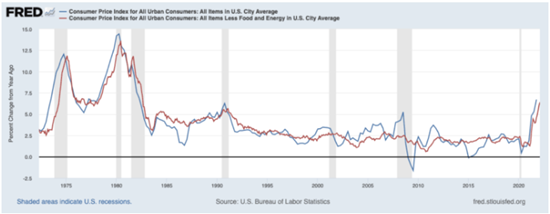
Figure 1: History of Inflation (CPI) from 1970 to today
The Fed learned from the years 2009 through 2020 that they could run more stimulus through the economy and not have it show up as inflation even with an economy running at full employment.
The Fed was willing to trade off economic support for higher inflation. This created a situation where we had interest rates at historic lows and a robust economy, resulting in deeply negative real rates of interest, i.e., interest rates below the rate of inflation.
This encouraged speculation. We can observe the effects of a low interest rate environment on the valuations of growth equities, crypto currencies, SPACs and meme stocks, to name a few; one was incentivized to take risk as there was no interest to be earned in bank deposits or bonds.
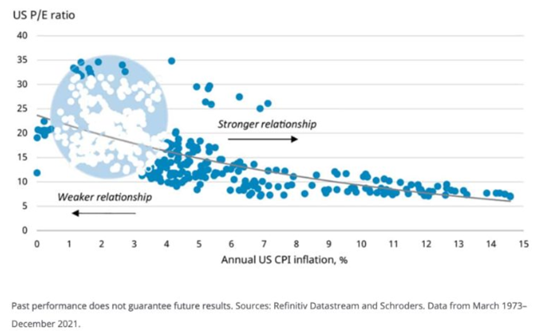
Figure 2: Relationship between equity price earnings and annual CPI%
What Worked?
I added allocations to oil, commodities, and gold in client portfolios about a year ago. This was based on the following ideas:
● Oil was under-invested and would be in tight supply
● Commodities would be a good inflation hedge and in high demand in a net zero carbon emissions world; and
● Gold is a good volatility/inflation hedge
This has worked out well so far for clients, with energy investments up over 30%, commodities up over 20%, and gold up over 8% year to date.
The question is, ‘where do we go from here?’ Aside from the geopolitical changes that the war in Ukraine implies for the World order, the war has bolstered concerns about the supply of energy, commodities, and the nationalization of production of goods generally.
Energy
The global supply of oil was already tight due to the lack of investment in exploration and production, environmental concerns, and net zero government policies. Spending by super major oil companies (Exxon, Shell, BP, etc.) declined by 50% since 2015 according to the IEA (International Energy Agency) while demand for energy increased.
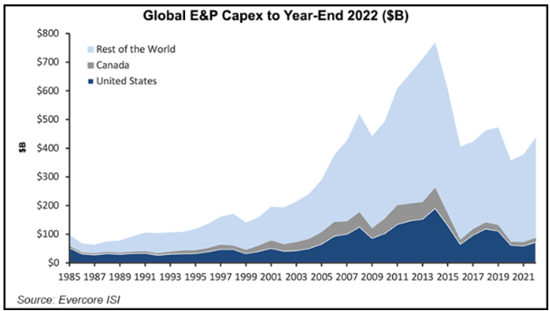
Figure 3: Global Energy Exploration and Production Capex
Oil and gas are inelastic commodities, meaning that supply does not change much when prices increase. The major cure for high prices is... high prices. In other words, when the price gets so high, demand is reduced.
Demand reduction will likely only take place at much higher prices. Some estimate that significant demand destruction will not occur until oil reaches $200 per barrel. Should the war continue and the world embargo Russian oil and gas, we will have a meaningful shortfall in global supply.
Having worked with a top energy long/short hedge fund, I learned a lot about how the energy industry works. Needless to say, there is little that we can do to increase supply in the short term, therefore we will just have to stomach higher prices for some time. While the forward Brent curve does imply a reduction in price in the future months, this price is highly dependent on the course of the war.
While the US economy is much less energy intensive than it was in the 1970s (it’s estimated at being roughly 50% more efficient), energy prices do nonetheless have an impact on the spending power of consumers in both real and psychological terms.
Commodities and War
The other effect of the war is on the broader commodities complex. Russia is currently the 11th largest economy in the world with a $1.6trn GDP, just behind that of Canada, and 20% less than Italy’s economy. Despite Russia’s smaller economy, it accounts for a large percentage of the worlds’ commodity exports outside of energy. Commodities such as palladium, diamonds, platinum, iron ore, aluminum, nickel, copper, wheat, and corn coming from Russia and Ukraine account for a high percentage of global supply (over 40% in the case of Palladium). A reduction in the supply of these commodities has the biggest effect on Europe but also has global repercussions for many industries.
In general, commodities and commodity-producing countries are under-owned as investments. This represents an opportunity for smart investors. The countries that have large resource exporting businesses are Brazil, Australia, Canada, South Africa; we have already seen this play out with the Brazilian markets up over 18% YTD.
Trade-Off: Inflation vs. War
In the absence of the geopolitical situation in Ukraine, we would expect the Fed to increase rates fairly aggressively to cool inflation. However, given the Russia / Ukraine conflict, that forecast is up for debate.
The Fed increased rates by 25 bps on March 16th and Jerome Powell is guiding markets to expect 6 more increases this year. This still leaves real rates in negative territory but will have the effect of helping cool the economy and therefore manage inflation. I believe that they will be cautious and will adjust their policy so as not to tip the economy into a recession. While the probability of a recession has increased, we are not modeling one; my sense is that the Fed will tolerate more inflation to allow the economy to keep expanding.
Figure 4 below shows that historical data indicates that after rate hikes, equities are well supported, after an initial drop.
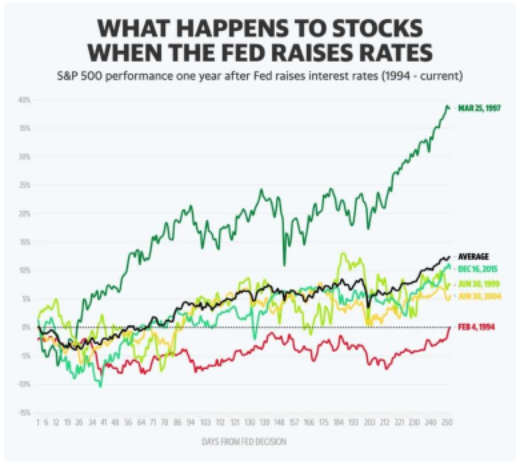
Figure 4: What Happens to Stocks when the Fed Raises Rates
Risk and Uncertainty
To be stressed with what is happening in Ukraine is to be human. This emotional response is natural and can affect how we think and invest. The war has created significant risks and uncertainties for investors. There are key differences, however, between risk and uncertainty. We can manage risk with hedging, insurance and other strategies, but uncertainty is not manageable and demands flexibility.
One doesn’t know how the war in Ukraine will unfold. When will it end? Will Russia stop at Ukraine or be aggressive towards other countries? What will the effect be on the US Dollar? Will the dollar lose influence as Russia trades more in Yuan, or crypto? What can be said for certain is that there are many unknowns and uncertainties which will result in market volatility; we are likely to see increases in equity, rates, FX and commodity volatility as a result of the current geopolitical situation.
How To Position Portfolios
History would indicate that it is best to invest when fear is high. While this is hard to do, it can provide great returns. I added to investments in the depths of 2009 and 2020 and have learned to assimilate lots of data and listen to my gut.
As discussed above, one area of investing that is likely to benefit is volatility. So how does one profit from volatility?
Long Volatility
Long volatility strategies benefit from higher market volatility. Quantitative, global macro and trend following strategies have elements of being long volatility.
Inflation-sensitive Equities
Certain sectors of the economy are more sensitive to inflation than others. In general, equities are good long-term hedges against inflation as companies are generally able to pass along higher input costs to consumers, although some equity sectors are better able to cope with inflation than others. The best sectors as inflation hedges are precious metals, consumer staples, utilities, real estate, materials and financials.
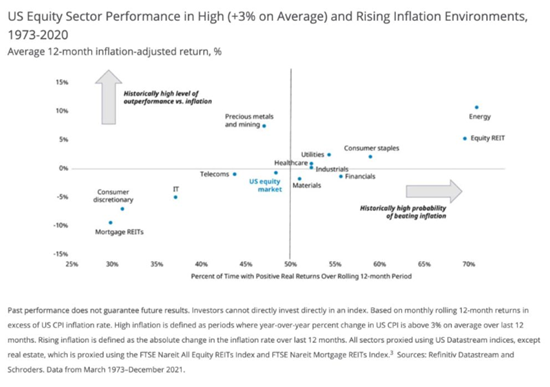
Figure 5: Equity Sector Performance in Rising Inflation Environments
Debtor Strategies and Short Duration Assets
When rates are rising one wants to keep debt investments short in duration and/or own adjustable-rate debt instruments. There are many interesting ways to capture increased rates via high quality floating rate bonds or by owning short duration loans that cycle quickly, such as short duration real estate bridge loans.
Extend Debt and Increase Leverage
One personal finance strategy is to extend debt obligations. For individuals, this might mean refinancing out of a floating rate mortgage into a 30-year fixed rate mortgage. For companies, this means issuing long duration debt. If inflation is persistent, then the debt service payments that one makes are devalued with each year that passes. Let inflation do the work for you.
Real Estate
Certain types of real estate can act as a good inflation hedge. Real estate sectors that have frequent payment resets tend to grow income over time and keep up with or exceed inflation.
Single or multi-family rentals, storage real estate as some that have allocated to. Rent payments are typically adjusted annually and typically adjust with a positive correlation to wages and inflation. Owning this type of real estate is like owning a bond that has an increasing coupon and future principal payment.
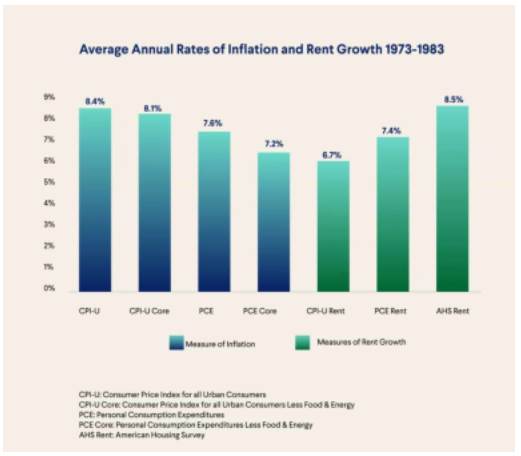
Figure 6: Average annual rates of inflation and rent growth 1973-1983
Resources and Resource-rich Countries
Certain materials and natural resources are undersupplied. With supply further constrained by the Russia conflict, this area of investing may provide good long-term areas for allocation. If you factor in demand from a net-zero carbon world the forecasted need for resources increases even more. See the charts below from the International Energy Association (IEA) projections for demand for copper, nickel, cobalt and lithium.
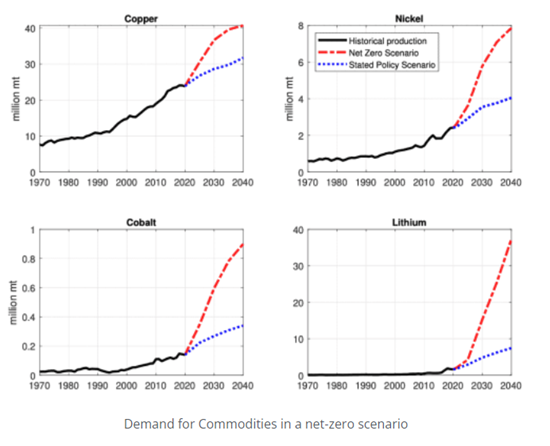
Figure 7: Demand for Commodities in a net-zero scenario
Allocating to countries that will benefit from increased resource demand are likely to benefit two-fold: One, the companies that are producing the resources are likely have higher earnings power. and two, the country’s currency is likely to appreciate. This has the potential to benefit the investor on both fronts.
Value Equities
Creating an equity allocation strategy that includes growth and value can provide portfolio balance. In inflationary environments, high P/E stocks tend not to perform as well as low P/E stocks. In this environment, we tend to tilt more than usual to value equities and blue-chip growth companies.
Profiting from inflation, volatility, and uncertainty is difficult, but clearly, opportunities and strategies exist above which can help. Getting exposure to the upside whilst overlaying downside protection hasn’t been this important for a while; we’re positioned for sustained dislocation.
**********
Brian Moss is Founder & CEO at Soaring Capital Management
***
The views expressed in this article are those of the author and do not necessarily reflect the views of AlphaWeek or its publisher, The Sortino Group
© The Sortino Group Ltd
All Rights Reserved. No part of this publication may be reproduced, stored in a retrieval system or transmitted in any form or by any means, electronic, mechanical, photocopying, recording or scanning or otherwise, except under the terms of the Copyright, Designs and Patents Act 1988 or under the terms of a licence issued by the Copyright Licensing Agency or other Reprographic Rights Organisation, without the written permission of the publisher. For more information about reprints from AlphaWeek, click here.






